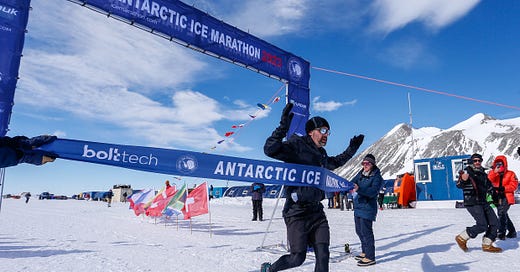What it takes to win the Antarctic Ice Marathon
How this Texas man won the World’s Southernmost Marathon
Eleven miles into the marathon, the 39-year-old Texas man put away his Shokz headphones, becoming one of the few to use Pandora in Antarctica.
When it comes to having Wi-Fi 600 miles from the South Pole, he could thank Elon Musk, who visited the continent the past summer on an alien expedition. Mike didn’t know if Elon found ETs, and he didn’t care. He …
Keep reading with a 7-day free trial
Subscribe to Luke's Essays to keep reading this post and get 7 days of free access to the full post archives.



